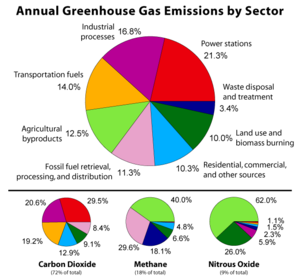Every once in a while I feel despair over the fate of the planet. If you’ve been following climate science, you know what I mean: the sense that we’re hurtling toward catastrophe but nobody wants to hear about it or do anything to avert it.
And here’s the thing: I’m not engaging in hyperbole. These days, dire warnings aren’t the delusional raving of cranks. They’re what come out of the most widely respected climate models, devised by the leading researchers. The prognosis for the planet has gotten much, much worse in just the last few years.
What’s driving this new pessimism? Partly it’s the fact that some predicted changes, like a decline in Arctic Sea ice, are happening much faster than expected. Partly it’s growing evidence that feedback loops amplifying the effects of man-made greenhouse gas emissions are stronger than previously realized. For example, it has long been understood that global warming will cause the tundra to thaw, releasing carbon dioxide, which will cause even more warming, but new research shows far more carbon dioxide locked in the permafrost than previously thought, which means a much bigger feedback effect.
The result of all this is that climate scientists have, en masse, become Cassandras — gifted with the ability to prophesy future disasters, but cursed with the inability to get anyone to believe them.
And we’re not just talking about disasters in the distant future, either. The really big rise in global temperature probably won’t take place until the second half of this century, but there will be plenty of damage long before then.
For example, one 2007 paper in the journal Science is titled “Model Projections of an Imminent Transition to a More Arid Climate in Southwestern North America” — yes, “imminent” — and reports “a broad consensus among climate models” that a permanent drought, bringing Dust Bowl-type conditions, “will become the new climatology of the American Southwest within a time frame of years to decades.”
So if you live in, say, Los Angeles, and liked those pictures of red skies and choking dust in Sydney, Australia, last week, no need to travel. They’ll be coming your way in the not-too-distant future.
Related articles by Zemanta
- Trouble bubbling in the Arctic (thestar.com)
- Met Office warns of temperature rises (guardian.co.uk)
- Met Office: catastrophic climate change could happen with 50 years (telegraph.co.uk)
- Family Planning & Climate Change (themoderatevoice.com)
- Obama: Time is running out on climate change (msnbc.msn.com)









